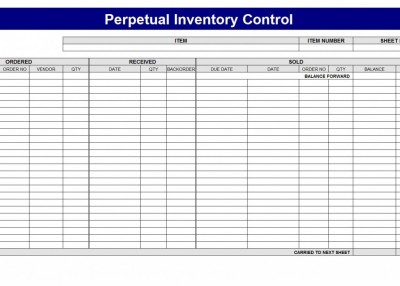
Inventory management is vital to a company’s health because it helps make sure there is rarely too much or too little stock on hand, limiting the risk of stockouts and inaccurate records. Poor inventory turnover can lead to deadstock, or unsold stock. A business does not want more stock than sales. An accounting measurement, inventory turnover reflects how often stock is sold in a period. One measurement of good inventory management is inventory turnover. Therefore, too much stock costs money and reduces cash flow. Before it sells, inventory (although reported as an asset on the balance sheet) ties up cash. The practice identifies and responds to trends to ensure there’s always enough stock to fulfill customer orders and proper warning of a shortage. It tracks inventory from purchase to the sale of goods. Inventory management helps companies identify which and how much stock to order at what time. At the end, you will find an FAQ list on inventory. In this article, learn about inventory management and its related disciplines from inventory experts. (3).East, Nordics and Other Regions (opens in new tab) *Material returned from factory to store room The returns are normally written in red ink to differentiate them from normal purchases and issues. * Materials returned from store room to supplier is usually recorded in purchases column and materials returned from factory to store room is usually written in issues column. Materials ledger card of Three Star company is give below: Materials ledger card is similar to inventory card prepared above. Solution:Īs the company uses perpetual inventory system, a materials ledger card would be prepared to compute the cost of materials issued to factory and the cost of materials on hand at the end of the month. Required: Compute the cost of material K5 issued to factory and the cost of material K5 at the end of June using last-in, first-out (LIFO) method. 30: 5 kgs of material K5 were returned from factory to store room.Ī perpetual inventory system is used to account for acquisition and issuance of direct materials. 26: 60 kgs of material K5 were issued to factory.

23: 50 kgs of material K5 were purchased $5.20/kg 19: 25 kgs of material K5 were issued to factory. 17: 50 kgs of material K5 were issued to factory. 12: 70 kgs of material K5 were purchased $5.10/kg. 09: 35 kgs of material K5 were issued to factory. 05: 10 kgs of material K5 were returned to supplier. The information about the acquisition and issuance of material K5 for the month of June is given below: Material K5 is used to manufacture product X. The Three Star company manufactures product X. Consider the following example: Example – LIFO perpetual system in a manufacturing company: In manufacturing companies, it is used to compute the cost of materials issued to production and cost of ending inventory of raw materials (also known as direct materials). The above example explains the use of LIFO perpetual system in a merchandising company. When LIFO method is used in a perpetual inventory system, it is typically known as “LIFO perpetual system”. LIFO perpetual inventory card (prepared above) can help compute cost of goods sold and ending inventory.Ī. Cost of goods sold (COGS) and ending inventory: Compute cost of goods sold and the cost of ending inventory using LIFO method.Prepare a LIFO perpetual inventory card.01: Beginning inventory 20 units $40 per unit. The company has provided the following information about commodity DX-13C and wants your assistance in computing the cost of commodity DX-13C sold and the cost of ending inventory of commodity DX-13C. Example – LIFO perpetual inventory system in a merchandising company:īZU uses perpetual inventory system to record purchases and sales and LIFO method to valuate its inventories. The following example explains the use of LIFO method for computing cost of goods sold and the cost of ending inventory in a perpetual inventory system. Like first-in, first-out (FIFO), last-in, first-out (LIFO) method can be used in both perpetual inventory system and periodic inventory system.

In other words, it assumes that the cost of merchandise sold (in a merchandising company) or the cost of materials issued to production department (in a manufacturing company) is the cost of most recent purchases. In contrast to first-in, first-out (FIFO) method, the last-in, first-out (LIFO) method of inventory valuation assumes that the last costs incurred to purchase merchandise or direct materials are first costs charged against revenues.


 0 kommentar(er)
0 kommentar(er)
